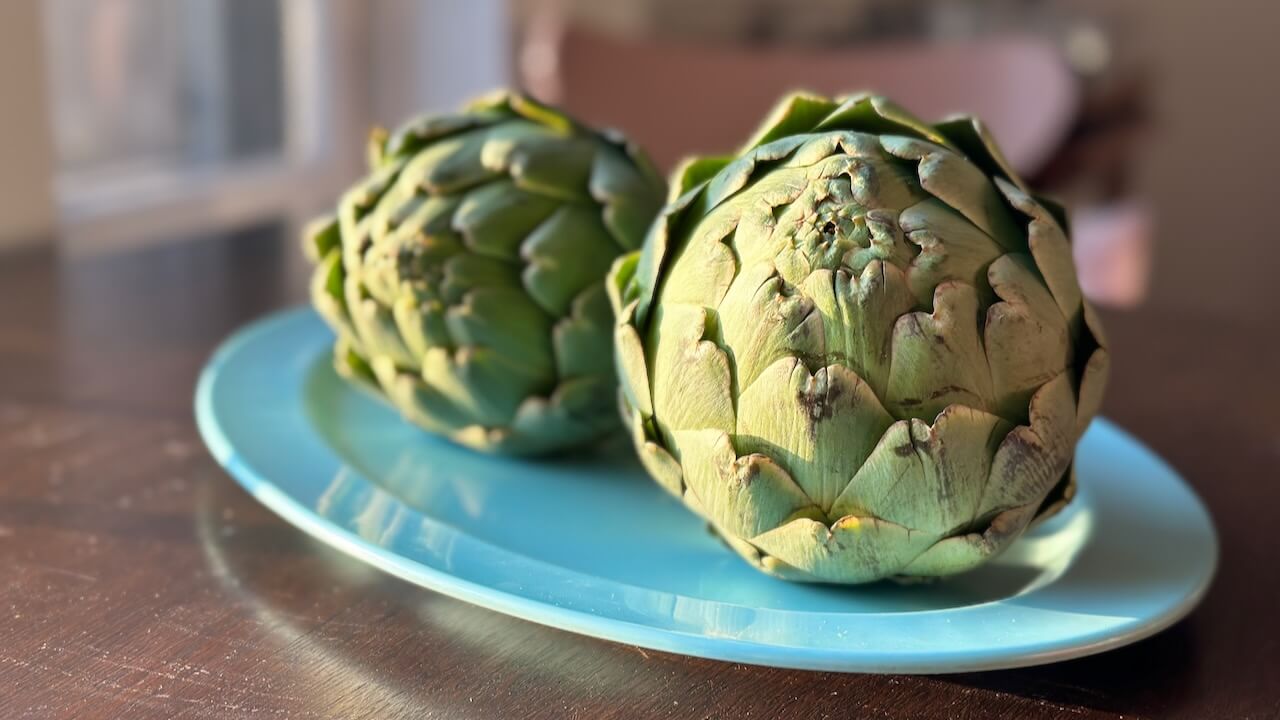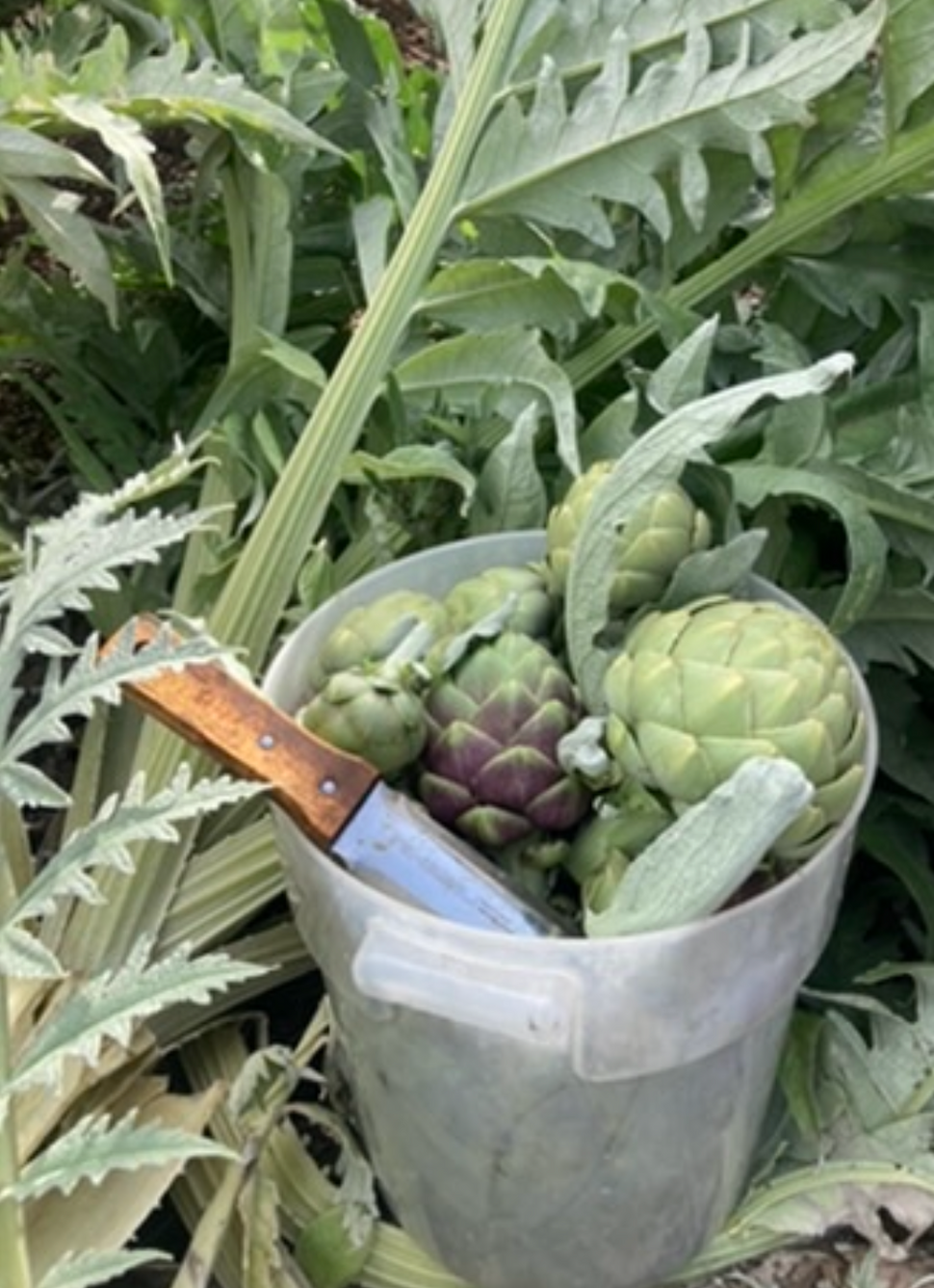In the history of the artichoke, a history of Sephardic Jews
The glorious vegetable made its way from the Iberian Peninsula during the Inquisition to Sicily and then to the Jewish Ghetto of Rome

The glorious vegetable made its way from the Iberian Peninsula during the Inquisition to Sicily and then to the Jewish Ghetto of Rome

My artichokes took a beating in the December storms, which they liked. By last week the wide dusky green leaves and stalks, swollen fat from all the water, produced bouquets of tight, cone-shaped flower buds. That’s when I called dinner. Last winter at the Forward’s virtual gala, I auctioned off an Artichoke Harvest Dinner for…

I gave a cooking class to vegetarians tonight, and focused on what was in season: artichokes, asparagus, peas, mushrooms. One of my students had expressed an interest in learning how to work with artichokes, so I decided to demonstrate how to make them both raw and cooked. We did a salad and a stew. Here…

I believe there are certain things to which we are each driven, like lemmings to their cliff. Probably the most curious of mine is a tenacious pull to cook unrealistic dishes I’ve never cooked before, at bad times. These attacks are particularly acute at holidays, when all the cousins -nth removed are coming and there…

I wasn’t introduced to artichokes until I was ten and I’m not sure how I survived those ten years without them. Scary looking on the outside, but delicate, meaty, and a fun appetizer activity on the inside. Artichoke quickly became a staple at our family Shabbat dinner table, kids scrambling to drag the leaves through…

Traditional Italian cooking and dining have much in common with Jewish culinary rituals. Families preserve cultural dishes, often passed down from one’s great-grandmother, to mark all manner of family dinners and holiday festivities. Italians, and Jews, no matter which region they hail from, express their passion for food by cooking, eating, and spending hours at…

Yoshie and I arrived in New Orleans on a Friday morning. We were newlyweds on vacation, staying with our friend Josh for the Sabbath before spending a few days exploring the city. Early in our relationship, the Sabbath had been a point of contention between Yoshie and me in that he observed it and I…

What would New York City be without its bagels and pizza? Jewish and Italian cuisines have given this city its most famous culinary staples. This Sunday, the Forward’s food columnist, Leah Koenig, will discuss the intersection of these two food cultures. As it turns out, Rome is one of the oldest continuous Jewish settlements in…








100% of profits support our journalism